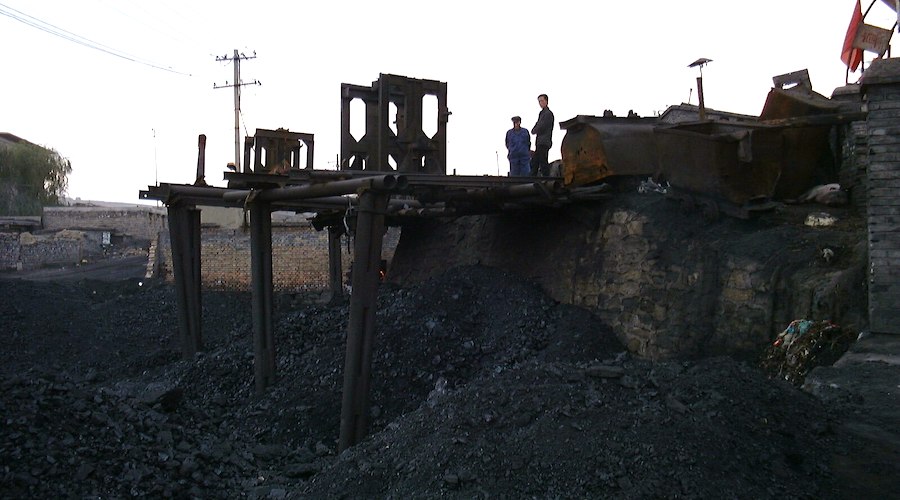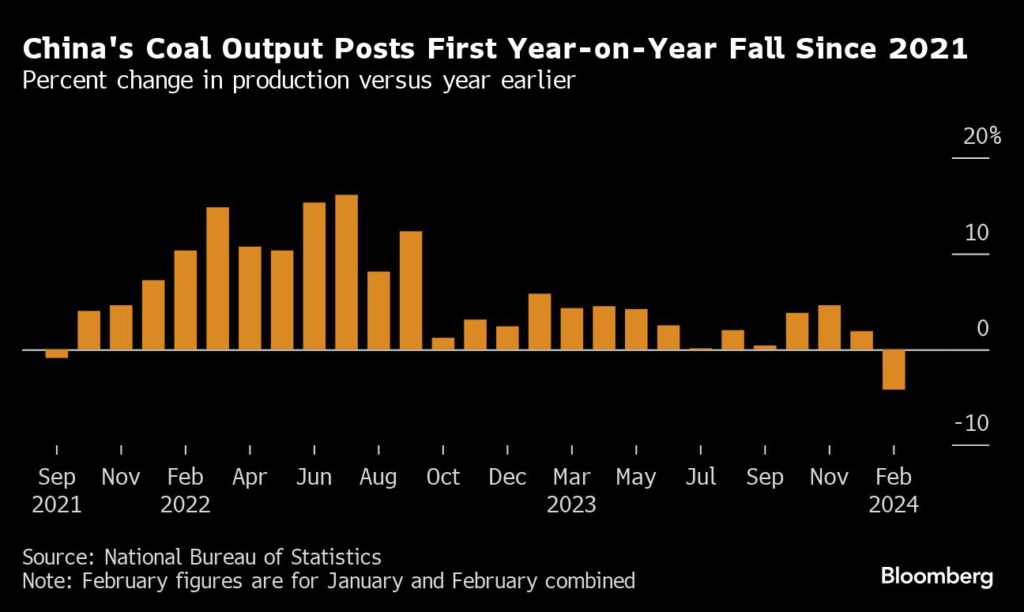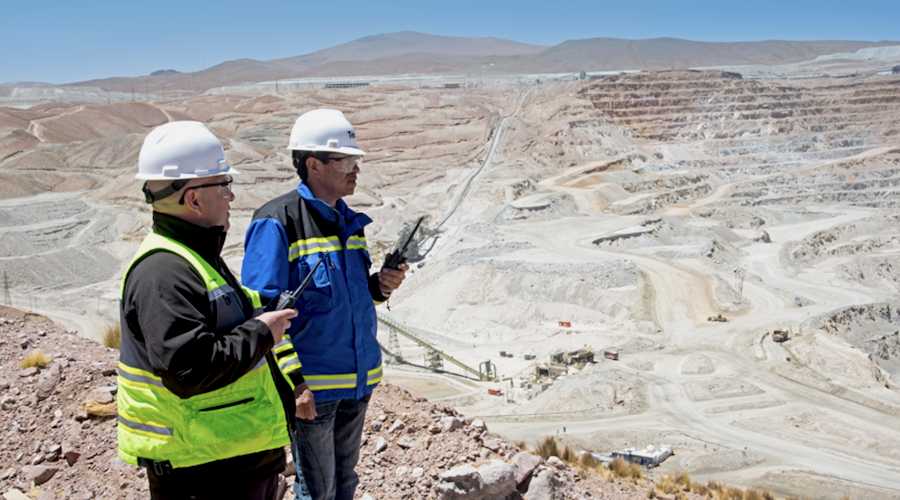China coal output posts first decline since Beijing ordered more

China’s output of thermal coal has fallen for the first time in years, adding to signs that Beijing’s long campaign to bolster energy security by digging more of the fuel may have reached its apex.
Coal production dropped 4.2% from a year earlier to 705 million tons for January and February combined, according to data from the National Bureau of Statistics. That’s the first year-on-year decline since September 2021.
Authorities in China put renewed emphasis on coal after a 2021 energy crisis — and the aftermath of Russia’s invasion of Ukraine — made energy security a top priority for President Xi Jinping. Coal output soared to record levels late last year.

Mine safety has become a bigger issue in recent months, with a rising death toll triggering more government scrutiny and forcing a slowdown in output in some key coal hubs.
Still, falling mine output doesn’t yet mean less reliance on coal-fired power, which expanded by 9.7% in the first two months by relying on a burst of imports to offset declining domestic coal supplies. That outpaced overall power generation, and offset softness in renewable power.
The coal numbers were part of China’s broader dump of data on Monday that showed a mixed picture for the economy and for commodities activity.
Oil processing reached record levels for the first two months of the year as refiners cranked up plants to feed a travel boom around the lunar holiday. Steel output edged up, while aluminum production was close to all-time highs.
China combines output data for January and February to smooth out the impact of the Lunar New Year holiday, which this year fell in the middle of last month. The leap year also included an extra day in February.
{{ commodity.name }}
{{ post.title }}
{{ post.date }}

Comments